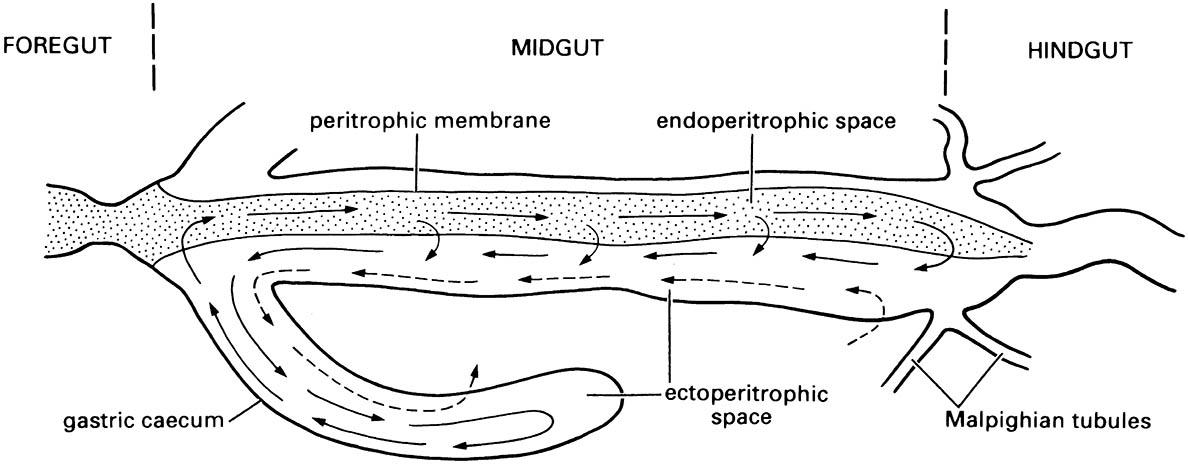3.6.3. Digestion of food
Most digestion occurs in the midgut, where the epithelial cells produce and secrete digestive enzymes and also absorb the resultant food breakdown products. Insect food consists principally of polymers of carbohydrates and proteins, which are digested by enzymatically breaking these large molecules into small monomers. The midgut pH usually is 6–7.5, although very alkaline values (pH 9–12) occur in many plant-feeding insects that extract hemicelluloses from plant cell walls, and very low pH values occur in many Diptera. High pH may prevent or reduce the binding of dietary tannins to food proteins, thereby increasing the digestibility of ingested plants, although the significance of this mechanism in vivo is unclear. In some insects, gut lumenal surfactants (detergents) may have an important role in preventing the formation of tannin-protein complexes, particularly in insects with near neutral gut pH.
In most insects, the midgut epithelium is separated from the food bolus by the peritrophic membrane, which constitutes a very efficient high-flux sieve. It is perforated by pores, which allow passage of small molecules while restricting large molecules, bacteria, and food particles from directly accessing the midgut cells. The peritrophic membrane also may protect herbivorous insects from ingested allelochemicals such as tannins (section 11.2). In some insects, all or most midgut digestion occurs inside the peritrophic membrane in the endoperitrophic space. In others, only initial digestion occurs there and smaller food molecules then diffuse out into the ectoperitrophic space, where further digestion takes place (Fig. 3.16). A final phase of digestion usually occurs on the surface of the midgut microvilli, where certain enzymes are either trapped in a mucopolysaccharide coating or bound to the cell membrane. Thus the peritrophic membrane forms a permeability barrier and helps to compart-mentalize the phases of digestion, in addition to providing mechanical protection of the midgut cells, which was once believed to be its principal function. Fluid containing partially digested food molecules and digestive enzymes is thought to circulate through the midgut in a posterior direction in the endoperitrophic space and forwards in the ectoperitrophic space, as indicated in Fig. 3.16. This endo—ectoperitrophic circulation may facilitate digestion by moving food molecules to sites of final digestion and absorption and/or by conserving digestive enzymes, which are removed from the food bolus before it passes to the hindgut.

(After Terra & Ferreira 1981)

